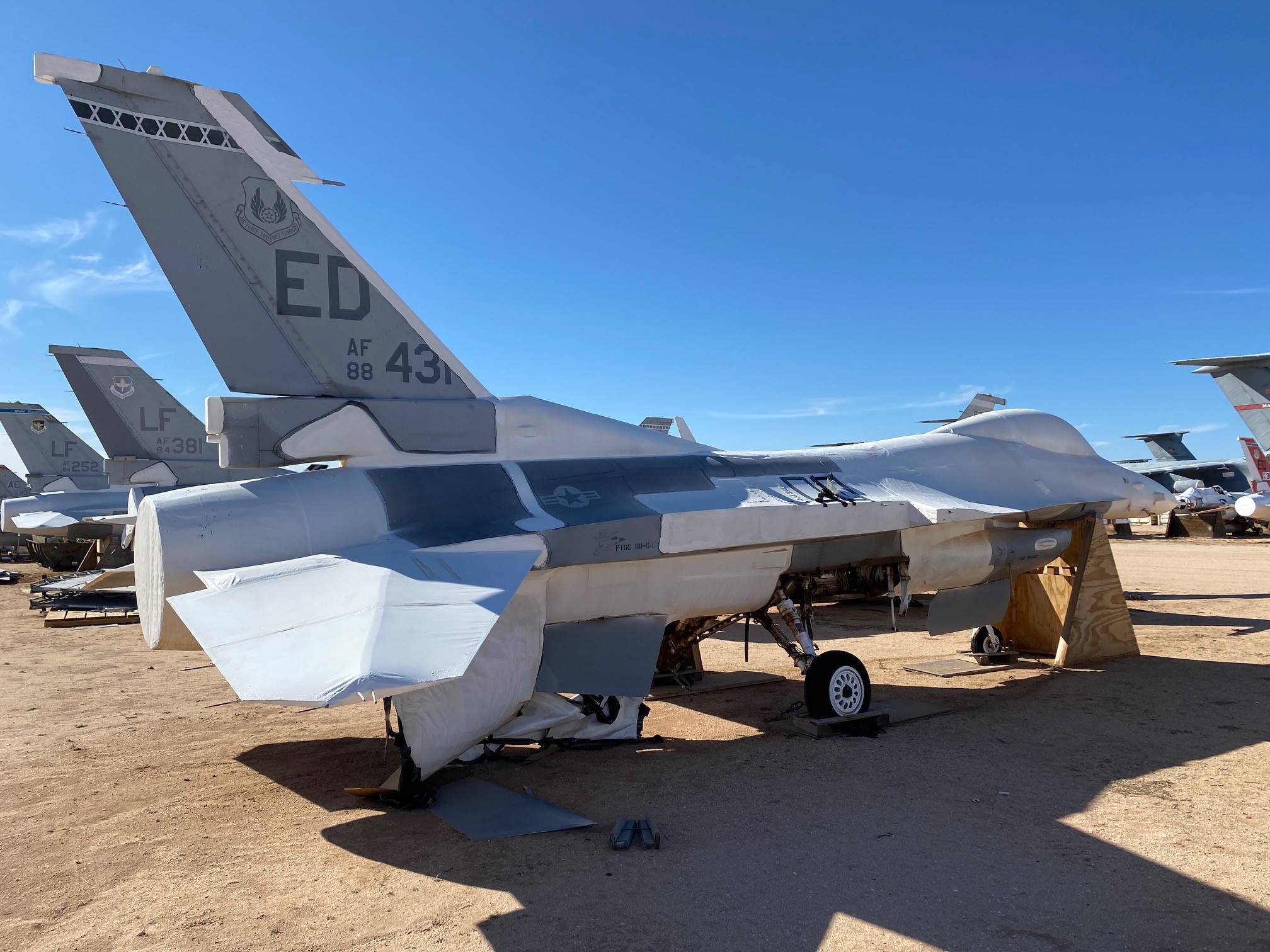The U.S. Air Force is launching a new program with Wichita State University’s National Institute for Aviation Research (NIAR) to make a digital replica of the F-16 Fighting Falcon in an effort to improve the sustainment and modernization of F-16s operating around the world.
The Air Force Life Cycle Management Center’s F-16 Program Office is sponsoring the project through a new contract with Wichita State, which will involve the disassembly and scanning of two F-16s – located at 309th Aerospace Maintenance and Regeneration Group (AMARG) at Davis-Monthan Air Force Base – to create a “digital twin.”
The project is expected to last four years, involves the collection of data essential for future efforts to keep the F-16 fleet operational and effective. This effort lays the groundwork for a multitude of potential future efforts in F-16 digital engineering.
Part of the initiative includes creating an adjustable 3D model of the plane.
“Our goal is to create a full-scale 3D model of the aircraft, with the exception of the engine,” said 1st Lt. Connor Crandall, Digital Twin Program Manager within the Fighters and Advanced Aircraft Directorate. “The data will be used to help address future parts obsolescence and mitigate supply chain risks because we won’t have to rely on legacy manufacturing sources and processes. We’ll have the 3D models and designs that we can send to the manufacturers we choose.”
NIAR will also create 3D models of some of the larger systems on the aircraft, such as the environmental control, hydraulic and fuel systems on the aircraft.
Lockheed-Martin is also engaged in this digital engineering effort and excited about the possibilities.
“Using a proven platform like the F-16 to advance digital twin data models allows our team to demonstrate a further reduction in lifecycle cost for sustainability while also introducing additional capability through digital thread continuity,” says Aaron Martin, StarDrive program manager, Lockheed Martin Skunk Works®. “This project is indicative of how Lockheed Martin’s technology investments will allow us to make even faster progress on future programs.”
Upon completion of the project, the Air Force expects to save time and money on sustainment.
“Maintainers and engineers work diligently to deliver aircraft to the fight, and it costs a lot of time, money and effort to break out an aircraft for updates and repairs,” said Capt. Jamee Boyer, an F-16 structural engineer. “It also costs money to develop a solution that doesn’t really work. With a 3D model, we can model different solutions in a virtual environment and see if they work, before having maintainers remove parts that may not need to be removed. Consequently, this would reduce maintenance workload, provide an innovative tool for engineers and prevent aircraft being removed from the flying schedule.”
While not the focus of the project, the digital twin effort lays the foundation for the potential future use of augmented reality and virtual reality training for F-16 aircrew members and maintainers.
“NIAR is eager to transition sustainment of the legacy F-16C into the 3D digital age,” said Melinda Laubach-Hock, NIAR F-16 Program Manager and Director of Sustainment. “Developing a virtual engineering environment that integrates structures and systems components will provide a virtual test bed for future modifications and other sustainment actions prior to physical implementation. Virtually testing prior to implementation will streamline the process, reduce airframe downtime, and increase mission readiness of this key military asset.”
Top leaders in F-16, NIAR, and Lockheed-Martin have already convened on multiple occasions to discuss the effort and the possibilities it can unlock for the future.
Col. Tim Bailey, F-16 System Program Manager, explained the effort as follows: “As part of AFMC’s Digital Campaign, we are modeling not only the structural portion of the F-16 but breaking new ground by also developing digital performance models of the hydraulic system, fuel system and environmental control system. This integrated digital engineering environment enables never-before possibilities for sustainment and modification through automation and much greater insight into the performance loads on our structure and systems during development. With the combined efforts of NIAR and Lockheed Martin we will push the boundaries of digital engineering across the USAF’s largest fleet.”
Leaders at Lockheed-Martin and NIAR are excited about the collaboration.
“We are proud to partner with the Air Force and NIAR to further digital engineering approaches for the F-16,” says Danya Trent, vice president, Lockheed Martin F-16 Program. “The use of advanced and emerging technologies across F-16 development, production and sustainment ensure the F-16 remains cost-effective, digitally connected and ready for any mission.”
“Wichita State’s partnership with the F-16 SPO and Lockheed Martin supports sustainment efforts for weapons systems, like the F-16C, that will immediately impact the preparedness of the warfighter,” said John Tomblin, WSU senior vice president for Industry and Defense Programs and NIAR executive director. “In addition, these programs provide applied learning opportunities for Wichita State graduate and undergraduate students, which, in turn, allows the military to grow its future workforce.”
Currently, the aircraft at AMARG are waiting to be disassembled for transport to Wichita. The move is expected to be complete Sept. 30.


 Courtesy
Courtesy